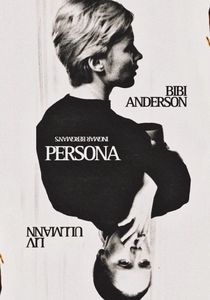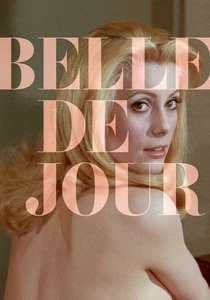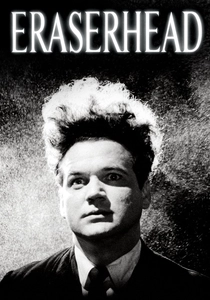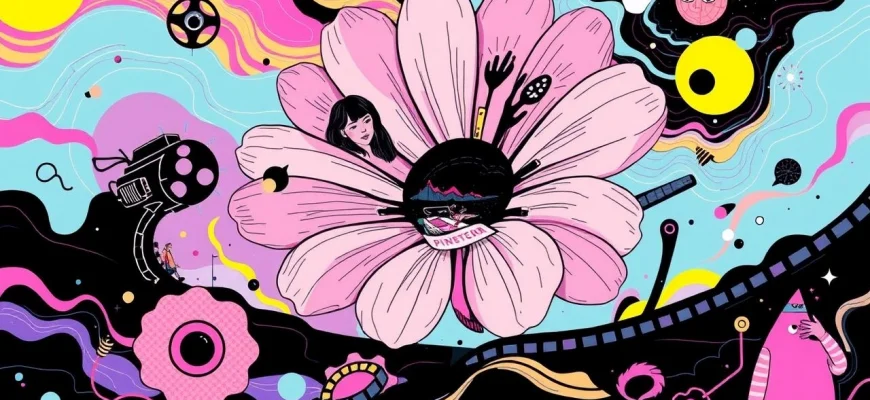If you loved the surreal, rebellious, and visually stunning world of 'Daisies' (1966), you're in for a treat. This article explores nine other films and shows that capture the same anarchic spirit, feminist themes, and avant-garde aesthetics. Whether you're drawn to its playful subversion of norms or its bold visual style, these recommendations will satisfy your craving for more unconventional and thought-provoking cinema.

Last Year at Marienbad (1961)
Description: 'Last Year at Marienbad' and 'Daisies' both challenge traditional narrative structures and use surreal, dreamlike visuals to explore themes of memory, identity, and reality. Both films create a sense of disorientation and ambiguity, inviting the viewer to interpret the story in multiple ways. The elegant, stylized visuals in 'Last Year at Marienbad' echo the bold, symbolic imagery in 'Daisies', though the former is more restrained and enigmatic.
Fact: The film's screenplay was written by Alain Robbe-Grillet, a leading figure in the Nouveau Roman literary movement. Director Alain Resnais is known for his innovative use of time and memory in cinema. The film's haunting score features a recurring organ motif.
 Watch Now
Watch Now 
Woman in the Dunes (1964)
Description: 'Woman in the Dunes' shares with 'Daisies' a focus on existential themes and the absurdity of human existence. Both films use surreal and allegorical storytelling to explore the constraints of societal roles and the search for meaning. While 'Daisies' employs a more playful and anarchic tone, 'Woman in the Dunes' is more meditative and claustrophobic, yet both films challenge the viewer to question the nature of freedom and identity.
Fact: The film is based on a novel by Kōbō Abe, who also wrote the screenplay. Director Hiroshi Teshigahara was nominated for an Academy Award for Best Director. The film's striking black-and-white cinematography emphasizes the stark, surreal landscape.
 Watch Now
Watch Now 
The Shop on Main Street (1965)
Description: While 'The Shop on Main Street' is more grounded in historical reality compared to 'Daisies', both films share a critical perspective on societal structures and human morality. 'Daisies' uses absurdity and surrealism to critique consumerism and conformity, whereas 'The Shop on Main Street' employs a more tragic and realistic approach to explore complicity and guilt during the Holocaust. Both films, however, challenge the viewer to reflect on ethical dilemmas and the consequences of passive acceptance.
Fact: The film won the Academy Award for Best Foreign Language Film in
 Watch Now
Watch Now 
Persona (1966)
Description: Like 'Daisies', 'Persona' is a groundbreaking film that experiments with narrative form and visual style to explore themes of identity, femininity, and psychological disintegration. Both films feature strong female leads and use surreal, fragmented storytelling to blur the lines between reality and illusion. The minimalist yet powerful visuals in 'Persona' echo the bold, symbolic imagery in 'Daisies', creating a similarly intense and thought-provoking experience.
Fact: 'Persona' is often considered one of Ingmar Bergman's masterpieces. The film's opening sequence is one of the most analyzed in cinema history. Bergman wrote the screenplay while recovering from an illness, which influenced the film's introspective tone.
 Watch Now
Watch Now 
Belle de Jour (1967)
Description: 'Belle de Jour' and 'Daisies' both explore themes of female sexuality and societal constraints, though from different angles. 'Daisies' uses absurdity and rebellion to challenge norms, while 'Belle de Jour' employs a more psychological and nuanced approach. Both films, however, feature strong female protagonists who defy expectations and use surreal, dreamlike elements to blur the lines between reality and fantasy.
Fact: The film stars Catherine Deneuve in one of her most iconic roles. Director Luis Buñuel based the film on a novel by Joseph Kessel. The film's title refers to the protagonist's daytime alter ego, 'Belle de Jour' (beauty of the day).
 Watch Now
Watch Now 
The Color of Pomegranates (1969)
Description: 'The Color of Pomegranates' and 'Daisies' both defy conventional narrative structures in favor of a poetic, visual storytelling approach. Both films use rich, symbolic imagery and a non-linear progression to explore themes of identity, art, and rebellion. While 'Daisies' is more anarchic and playful, 'The Color of Pomegranates' is more meditative and spiritual, yet both films create a dreamlike, immersive experience that challenges the viewer's perception.
Fact: The film is a biographical portrayal of the Armenian poet Sayat-Nova. Director Sergei Parajanov was imprisoned by Soviet authorities for his artistic and political dissent. The film's visual style is inspired by Armenian miniature paintings.
 Watch Now
Watch Now 
Valerie and Her Week of Wonders (1970)
Description: Similar to 'Daisies' (1966), 'Valerie and Her Week of Wonders' is a surreal and visually poetic film that blends fantasy with reality. Both films feature young female protagonists navigating dreamlike worlds, challenging societal norms, and exploring themes of innocence and corruption. The use of vibrant colors, symbolic imagery, and non-linear storytelling in both films creates a whimsical yet unsettling atmosphere.
Fact: The film is based on a novel by Vítězslav Nezval, a prominent Czech surrealist poet. Director Jaromil Jireš was part of the Czech New Wave movement, which also influenced 'Daisies'. The film's dreamlike narrative has been compared to fairy tales and Gothic literature.
 Watch Now
Watch Now 
The Discreet Charm of the Bourgeoisie (1972)
Description: Like 'Daisies', 'The Discreet Charm of the Bourgeoisie' uses surrealism and satire to critique societal norms and the absurdity of human behavior. Both films employ a fragmented, non-linear narrative and a playful, ironic tone to expose the hypocrisy and emptiness of bourgeois life. The dreamlike sequences and absurd humor in both films create a similarly disorienting and thought-provoking experience.
Fact: The film won the Academy Award for Best Foreign Language Film. Director Luis Buñuel was a master of surrealist cinema, known for his collaborations with Salvador Dalí. The film's title is ironic, as the characters are anything but discreet or charming.
 Watch Now
Watch Now 
Eraserhead (1977)
Description: 'Eraserhead' shares with 'Daisies' a surreal, nightmarish quality and a focus on the absurdity and grotesqueness of existence. Both films use striking, unsettling imagery and sound design to create a unique, immersive atmosphere. While 'Daisies' is more colorful and playful in its critique of societal norms, 'Eraserhead' is darker and more introspective, yet both films challenge traditional storytelling and visual conventions.
Fact: 'Eraserhead' was David Lynch's first feature film and took five years to complete. The film's sound design was created using unconventional methods, including recording industrial noises. Lynch has described the film as 'a dream of dark and troubling things.'
 Watch Now
Watch Now 








